Dear Reader, in this age of AI created content, please support with your goodwill someone who works harder to provide the human-made. Sign up in the righthand column or bottom of this page. You will receive my hand illustrated monthly newsletter RESTORE NATURE and access to the biodiversity garden design course as I write...and nothing else, I respect your time.
sustainable agriculture, conservation and urban gardening
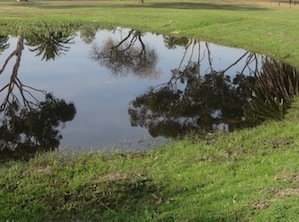
An argument for a different use of urban gardening and green space
This is my view of how urban gardening could help cities, and Cape Town in particular.
I have set out an argument from problem to solution, an attempt at a synergy of a lot of issues. I warn you that you'll need to be patient as I move from point to point, and bear in mind there will be broad sweeps in order to close the circles.
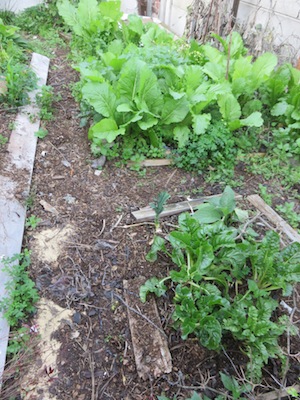 My struggle with productivity in urban farming starts here
My struggle with productivity in urban farming starts hereFood security
As anyone in the know will know, there is a vast global movement concerned with food security in which guerrilla gardening and urban food gardens play a part.
As humankind increases in quantity, all services and supply lines in our cities are taxed to the max. We’ve had a terrible drought and it impacted only moderately to change behaviour with a small number of people passionate about doing something, and a larger group who are now aware there is a problem. Many are offended at the authorities for not being able to keep up business as usual, or open taps with no holes barred… I love the mixed metapahors this kind of thing opens up…. They feel it is not up to them as individuals. The government ‘must’. This attitude is common across all groups in our country privileged or not.
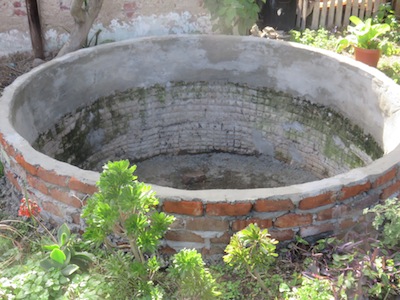 Fear of the next drought made me invest in this rain cistern cum swimming pool cum fishpond cum aquaponic system under construction. Glad I can afford this 4m3 insurance.
Fear of the next drought made me invest in this rain cistern cum swimming pool cum fishpond cum aquaponic system under construction. Glad I can afford this 4m3 insurance.Our road system is overtaxed. Traffic jams lasting several hours are now the norm. We are slowly learning about the fragility of supply and service systems that are centrally organized. Many people have become worried about food supply to our huge new metropoli, and we are not alone in the world in this concern. The great new cities of the world are so vast and the supply lines are vulnerable. It takes only a blowout in a nuclear plant, or a tornado or a fantastic hike in oil prices to shut down the supply lines and then we will starve in our millions.
Thus producing food close to the point of need has become something people are concerned about, and has given rise to the food security ‘movement’. This is often accompanied by concerns about food crop seeds and the loss of diversity and the monopolies of seed giants like Monsanto. Activists seeking to protect seed diversity have founded organizations like ACbio which fights for plant breeders rights on this continent. The loss of seed diversity is important to food supply, because it makes supply more fragile. It takes only one new killer plant disease to wreak havoc on a plant species, as it did to the vine globally with Phylloxera in the 19th Century, and is doing to olives in Italy at the moment. The less diverse the genetics of the food plants and the more widespread their distribution, the greater the chance of devastation by disease due to lack of resistance in one variety, and the further the reach of the epidemic.
A difference between northern and southern urbanization
is its speed
A lot of this food security activism is taking place in the global north as they feel the intense pressure of compressed urban life and the access to fresh food becomes more and more difficult. There are wonderful projects like medicinal herb foraging in the streets of Amsterdam to inspire us all.
However in the global south, I think what we have to deal with is the shere speed of the change to urbanization. The rate of urbanization and the rapid expansion of cities is more of a southern problem. In my own lifetime I have seen our mushrooming city cover about 3600 square kilometres of land that was swampland and drifting sand dunes and stands of wattle and lowland Fynbos vegetation when I was a child. Speaking with people from other southern climes I’ve heard of the same experiences over and over again.
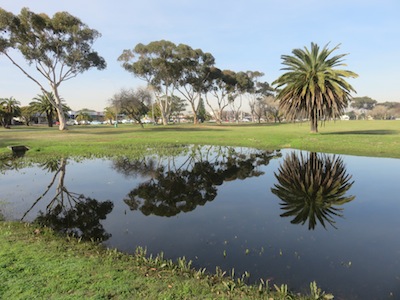 such a beautiful waste. Hectares of public land in Monte Vista
such a beautiful waste. Hectares of public land in Monte VistaOur hidden advantage
This speed of development has a hidden treasure, and is not all calamity. While many European cities are in landscapes which have not been 'natural' in thousands of years, we still have living seed banks of the indigenous plants buried in some of our soils on the city periphery. Its not easy to use these, but recreating the original vegetation is less far off. There are the seed banks, there is memory and there are tiny patches of vegetation nearby which can still be consulted as ecological libraries.
Diversity and habitat conservation
Thus I come to the other aspect of burgeoning cities heard less often in food security circles but loudly in other places. Indigenous plant diversity, whose loss is bemoaned by conservationists. The loss of habitat, plants and animals is caused by the spread of urban settlements and farmland supplying these. This loss of plant diversity is often seen as collateral damage that is unavoidable, and what is important is food supply and plants useful to mankind and the threat that city size imposes on food supply.
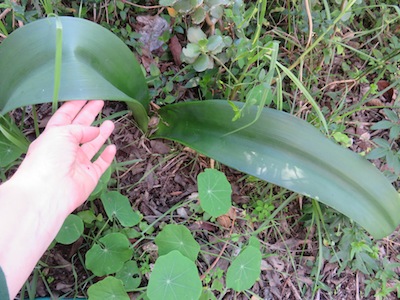 medicine, medicine everywhere
medicine, medicine everywhereOne lucky thing no one else has
Cape Town is at the heart of a very diverse plant Kingdom with complex fragile interactions between pollinators, fire, over grazing and soils, that are leading to interdependent species loss domino effects or cascading extinction.
This plant Kingdom, if we are to believe archaeologists and their theories about the origin of mankind, has sustained the nutritional needs of people for longer than any other type of vegetation on earth, because modern human beings have been living here in the Cape Floristic Kingdom for hundreds of thousands of years, ten times longer than since the habitation of the caves of Lascaux, fifty times longer than the advent of agriculture and a hundred times longer than the time since the building of the pyramids. It offers a promise of being useful to sustainable urban agriculture and urban gardening.
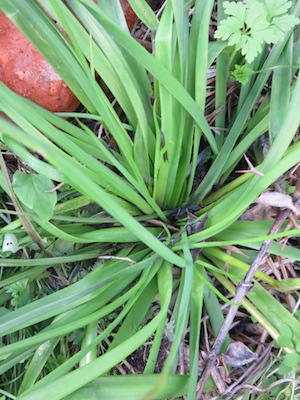 My indigenous veg thrives on neglect. It has since sprouted 3 flower heads, the harvest
My indigenous veg thrives on neglect. It has since sprouted 3 flower heads, the harvestNothing useful in the Fynbos ?
This Cape Flora has to be able to sustain people, it must contain all the vegetable food needed otherwise the ancestors of all mankind would have died out here, in Eden. Indeed the groups of people who were still around in historic times and lived here for the longest time were custodians of an astronomically rich plant and local food knowledge that is evidenced in the lexicon of Khoekhoe languages or Khoekhoegowab. There is a use for every plant in this rich rich vegetation of ours, and they have been tasted and tested for hundreds of thousands of years longer than anywhere else. I only dimly hear Jared Diamond and his simplified construct of world agrarian history, I believe some more plant taming can be done in this the richest plant Kingdom on earth.
The Cape Flora grows on low nutrient mineral leached soils, and is subject to seasonal drought. It could not sustain, even if we could replace it nearly entirely, where there is space, the sheer number of people who would need to feed from it and use it to live. This limit to the nutritional output of the Fynbos has kept down large game populations since it came into being millions of years ago, and through the limit on game and plant nutrition, has limited human populations.
This is why higher yielding food plants from the rest of the world have become a necessity.
Buuuut... this creates a problem in terms of sustainability
These higher yielding food crops are often from regions of the world which sustained very high populations early on during the domestication of plants, because they were temperate with high rainfall. Thus the plants are water guzzling, heavy feeding, high maintenance plants in our summer drought, leached soil environments.
The use of soil additives like manure and compost and aqua IQ become extremely important in maintaining the productivity of these fragile exotic food plants in the high maintenance agriculture of urban gardening. Aquaponics is a form of growing such thirsty plants which is very conservative with water and produces fish protein as an additional harvest.
Working for water, an organization whose aim is to remove the vast stands of alien vegetation which reduce our watersupply, has failed only in that total alien irradication sometimes creates an invasion problem with another species. We need soil cover of some kind, a shade canopy over the earth to facilitate ground water conservation and penetration, as permaculture will tell you, and what better than to use our local Fynbos plants, which are water wise and soil preserving and allow us to conserve habitat, plant diversity and myriads of useful plants all at once.
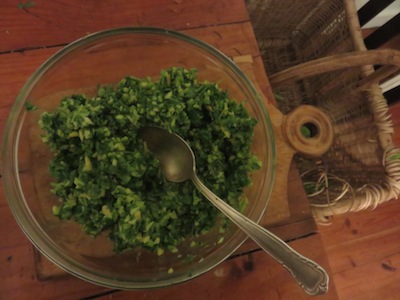 a wildly nutritious and delicious green sambal, 10 minutes max in the making
a wildly nutritious and delicious green sambal, 10 minutes max in the makingSummary of botanical needs and what we need from the botany
In sum what we need from urban gardening is to grow food close to the end user, conserve food crop seed diversity, grow higher yielding crops intensively with the use of natural soil additives, grow water wise food, and conserve our fantastic Fynbos plants.
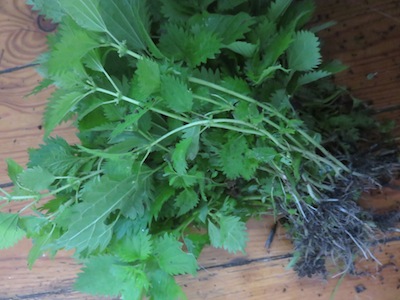 food that thrives on neglect. Some call weeds
food that thrives on neglect. Some call weedsWhy conserve Fynbos when it can't support us ?
We need to conserve the diverse indigenous ecosystems sustained in lowlands habitat for the sake of general biodiversity, as well as their nutritional, flavouring, colouring, perfume, medicinal and other uses such as nitrogen accumulation. One of the largest plant groups in the Fynbos are legumes and we probably have the greatest diversity of them on earth, with such low nutrient soils, all biomes depend on our indigenous legumes.
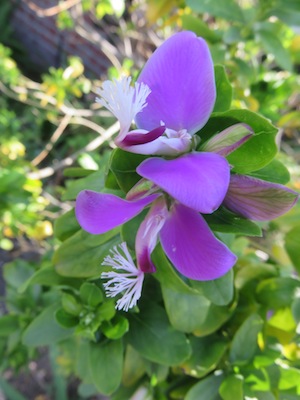 Just one of our gorgeous tree legumes, Podalyria
Just one of our gorgeous tree legumes, PodalyriaWhere and how land use could change to do more good through engaging urban gardening
Spreading cities are a problem which contains its own solution.
Instead of applying conservation efforts only to ‘pristine’ scraps of bush which are getting smaller and smaller let us apply it to these AND to the urban gardening space. This urban space includes roadside space and empty space throughout the city that is really vast, and at present colonized by Kikuyu grass and gum trees, if that. It also includes millions of urban gardens, small and large, which can have high levels of micromanagement. If we used all available space in a mixed form, for growing food and conserving useful Fynbos species, we have solved our food supply and our conservation problem to an extent.
In our micro managed ecosystems in urban gardens, tiny patches of indigenous vegetation, meso American, and African food plants, and the usual west Asian food crops we know so well can coexist under tight control and pose less risk of invading ‘pristine’ Fynbos. Horticultural development could lead to non-invasive varieties dominating the markets.
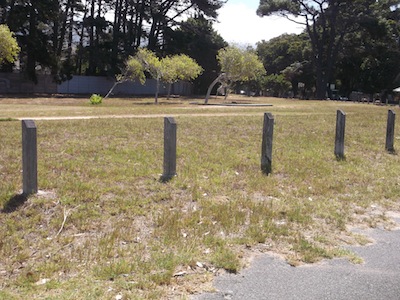 wasted land by the super rich in Constantia
wasted land by the super rich in ConstantiaThe vast open Kikuyu covered spaces could be used to regenerate facsimiles of the indigenous ecosystems and I’m working on that in my reading and projects, and would love to tackle such a space using it for a laboratory. There are many other better qualified folk at Kirstenbosch whose knowledge can be fed into the project of urban gardening for conservation. Part of each area could contain a reestablished indigenous ecosystem, part an exotic food forest, and part vegetable garden. If they are concerned about future road expansion, vegetables are a very short term crop. This use of waste land would turn our city into an exquisite place to live instead of a hell hole. I suggest we start with the N1 verges and flyover oases, the banks of rivers like the Elsieskraal, Liesbeek, Black and Eerste rivers, and the tracts of land covered with blowing rubbish in areas like Retreat and Lavender Hill. The government can’t do it, we have to do it as the people. But the government needs to support us instead of sabotaging and persecuting the people trying to reframe the city’s land use in a more healthy ecological way.
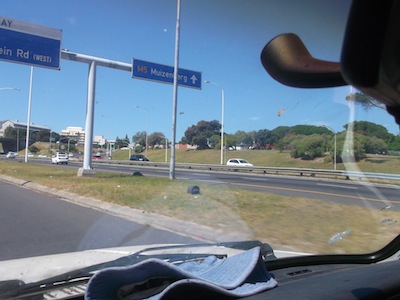 wasted land on the M5
wasted land on the M5Is all this just too much work or is it what we need
to find common ground for urban gardening?
This would take a phenomenal amount of activism, cooperation and work, work, work. Perhaps it is a chance for us to get to know each other across formidable social boundaries and pull this city by its bootstraps out of its Apartheid death constellations, by opening blocked arteries between people, and bringing the city back into vibrant life with a vital network exchanging capital, opportunity and skills between all sections of the city.
Rediscovering the uses of most Fynbos species which have to be there…. considering this is Eden… I use the word without fanatical attachment, its just a fact, is also going to take a lot of research and experiment by everyone in the metropolis and the institutions of higher learning.
Churches, Mosques and other institutions like libraries have fantastic, highly organized networks for spreading a city wide urban gardening cum Eden project.
 A stunning dance event at a local church. I dream of meeting some young people with this much energy and dedication who are into green things
A stunning dance event at a local church. I dream of meeting some young people with this much energy and dedication who are into green thingsBotanical careers
Legions of careers are to be made for locals in this integrated new use of land, in urban gardening, if we apply a little imagination and get support for such projects. People are needed to develop methodology for recreating ecosystems that could be a part of urban gardening. There is also work to be done on streamlining the process of food growing, to make it easier to provide for one's own table. On a tiny plot of Cape Flats sand, such as I have, this isn’t an easy feat, and I'm constantly experimenting to increase productivity on the small patch I have.
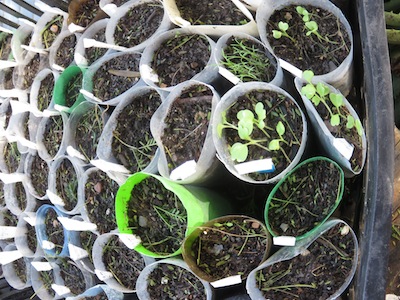 one of my experiments in micro farm production
one of my experiments in micro farm productionPeople are needed to tame our local plants, and do research on all kinds of functions they could perform in urban gardening, from nitrogen accumulators, to possible green roof cover (a huge industry in France and Germany, as all large buildings must have green roofs by law). People are needed to grow food on a large scale but sensitively within the city. Cooks are needed to advance the culinary uses of local plants, artists are needed to record all of this urban gardening culture on film and camera, writers to record the process in words, web designers to give it a global platform and marketing people to popularize and sell concepts and products. Teams of herbalists and chemists are needed to do research on the properties of indigenous plants and their efficacy, their essences need to be distilled and new perfumes made, and a vast new cosmetics industry to be established. We need teams of environmental lawyers and intellectual property experts to help us, when leveraging the power of capital to fund projects, that we keep our own capital, and do not lose this new knowledge to benefit other people who are ridiculously wealthy already.
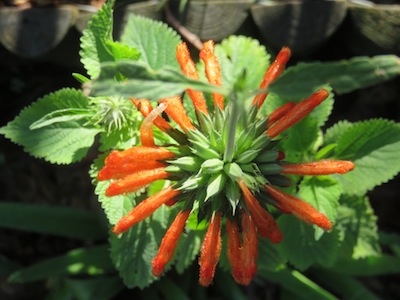 medicinal and gorgeous Leonotus
medicinal and gorgeous LeonotusWe also need to make greater use of and adapt the plants developed in a different type of agriculture than that on which western food supply is based. We need to look at agriculture that was or is mixed rather than monocultural, where food came from forests and mixed vegetable patches rather than plowed fields. We need to look at the plants that yield highly in mixed urban gardening ecosystems, and for this we need to look south again, to the the Americas and Mexico, to Africa and south Asia. Apparently home gardening can produce more food than the most intensive form of farming on the same area. That is a bit of a vague claim, but a home garden has a high quota of personnel per square meter. Aka you and your partner and children, are probably going to get every last ounce of productivity out of your limited space.
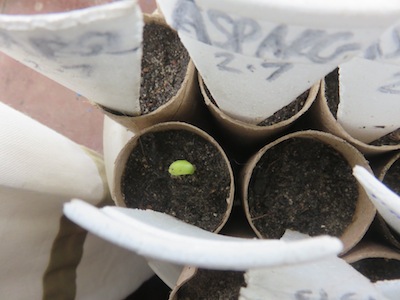 With fierce joy up pokes the artichokes. One of three varieties in my mini nursery
With fierce joy up pokes the artichokes. One of three varieties in my mini nurseryMy personal role in urban gardening seems to be growing out of seeds I’m sowing daily in a fascinated preoccupied passion fashion, culturing spice plants, food trees like tamarillos, indoni, pineapples, avocado and other useful plants. I’m learning a lot and dreaming a lot. Writing seems like a one way conversation with the inter-webs. I dearly hope I’m giving other people some nutrition, but don’t know. I dearly wish they'd engage with me, criticize, like, share, or offer new perspectives.
Why the human-plant relationship can be a solution
rather than a problem
Urban land in public and private ownership can solve our urban problems and lead us out of urban crisis or at least hugely ameliorate it, if the new higher levels of human population are seen as a solution not a problem, a new sort of ecosystem.
To make the urban gardening strategy work one could make use of the good that humans can do in their earth custodianship. Humans have the ability to artificially manage systems, experiment and change things within a matter of years, to destroy completely but also to regenerate forest (for example), faster than nature does it, by coming to a better understanding of what 'nature' is doing during regeneration. Human curiosity, intelligence and pride in ownership, and the desire to look after oneself and be independent of supply systems can be leveraged to do enormous good on multiple scales, in such a large co-operative public urban gardening project.
The foundation of prosperity, in the long view, is not built on stuff which is mined or pumped out of the ground but on things with their roots in the ground.
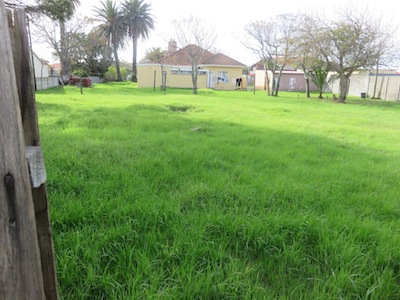 Though shalt absolutely NOT covet they neighbour's property ! ?
Though shalt absolutely NOT covet they neighbour's property ! ?------
Return from"urban gardening" to the home page for many ideas on natural gardening
------
growing vegetables the labour saving cost effective natural way
------
the history of formal herb garden design and natural plant spacing in the garden, 3 techniques
Ask us ?
If you have any questions please let us know !
What Other Visitors Have Said
Click below to see contributions from other visitors to this page...
growing forest trees in a useful plants or food garden project 




One of our great forest trees, the Knysna Yellowwood, could be used in many ways: to stabilize soil, provide shade, be harvested for massive timber, fine …
Restore Nature Newsletter
I've been writing for four years now and I would love to hear from you
Please let me know if you have any questions, comments or stories to share on gardening, permaculture, regenerative agriculture, food forests, natural gardening, do nothing gardening, observations about pests and diseases, foraging, dealing with and using weeds constructively, composting and going offgrid.
SEARCH
Order the Kindle E-book for the SPECIAL PRICE of only
Prices valid till 30.09.2023
Recent Articles
-
Geography Research Task
Jan 31, 25 11:37 PM
To whom it may concern My name is Tanyaradzwa Madziwa and I am a matric student at Springfield Convent School. As part of our geography syllabus for this -
Eco Long Drop Pit Latrines Uganda
Nov 29, 24 02:45 AM
Good evening from the UK. My name is Murray Kirkham and I am the chairman of the International and foundation committee of my local Lindum Lincoln Rotary -
Landscape Architect
Oct 01, 24 10:42 AM
I so appreciate your informative description! Your experimentation and curiosity with the seeds, germination, and rearing of the maggot are exciting to
"How to start a profitable worm business on a shoestring budget
Order a printed copy from "Amazon" at the SPECIAL PRICE of only
or a digital version from the "Kindle" store at the SPECIAL PRICE of only
Prices valid till 30.09.2023





